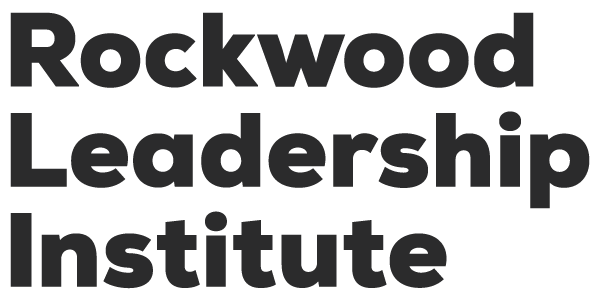Chances are, if you’re reading this, you may already know that leadership development can help you decrease burnout, build a stronger network, and connect (or reconnect) with your purpose.
But did you know that it can also have a direct effect on communities of color?
This is one of many interesting pieces of data in the National Committee for Responsive Philanthropy’s latest report, Cultivating Nonprofit Leadership: A Missed Opportunity. The report looks at the challenges and benefits of leadership development in the nonprofit sector, and features Rockwood and a few of our alums.
We found a lot of great stuff in this report, but here are a few of our favorite points (including two from the webinar!):
- It changes how movements look and who’s leading them.
Along with its ability to indirectly support secondary and tertiary leaders at organizations (what NCRP calls a “multiplier effect”), leadership development can help lift people into executive roles who have historically been excluded.
For example, the report notes that fear of burnout is driving women away from nonprofit leadership, making skills around maintaining work-life balance a key to increasing their presence in leadership roles. The report also suggests that for some people of color, there may be a perceived connection between leadership and oppression, which causes them to not identify themselves as “leaders”. Providing leadership development opportunities, especially with a culturally-inclusive lens, ensures that those at the forefront of movements reflect those they’re serving.
- It focuses on relationship, and that’s what makes it different.
Leadership development is often defined as training to help relationships within organizations. However, it also helps people build external networks that allow them to share resources and increase capacity through collaboration over a long period of time:
Leadership development and movement building are fundamentally intertwined, and understanding this is crucial and cannot be an afterthought. Large-scale social or policy changes do not occur in a vacuum; rather, they are contingent on an understanding of the critical role that leadership plays in achieving transformational change.
- It helps break barriers.
The report describes two great examples of network-building that influenced on-the-ground change that otherwise may not have occurred due to perceived long-standing opposition between groups: 2011 Rockwood Yearlong Fellow Gustavo Torres of Casa De Maryland uniting voters on the issues of LGBTQ marriage and immigration rights, and alum Rea Carey of the National Gay & Lesbian Task Force leading the organization in a march against NYC’s stop-and-frisk legislation.
As the report notes:
Bucking the narrative that had long put LGBTQ groups at odds with people of color – a narrative Carey called a “so-called ‘wedge’” and a “red herring” – both leaders overcame a perceived barrier to cooperative progress and, more importantly, lent their voices and thousands of others to the causes of racial justice and LGBTQ rights.
This type of work across movements comes from both the network-building boost leadership development provides, and also the way in which it helps leaders “think outside the box” by disrupting their usual ways of developing strategies.
BONUS: 2 Things We Loved From the Webinar
- It’s not just for social change work.
Movement Strategy Center’s Taj James noted that while it’s clear why social justice movements should be interested in leadership development, it can serve a bigger purpose. Because leadership development is actually human development, those who go through this type of training not only become better nonprofit workers, but also better parents, partners, and neighbors.
This is crucial for large-scale change because, as James said:
…Most people are not touched by 501(c)(3) organizations, and the level of social change that we need requires that human development occur across society in ways that we [allow us to] face the really big economic challenges globally that we’re dealing with.
- Funders want data, leaders want trust.
Pia Infante, co-director of The Whitman Institute, mentioned that funders may see leadership development as hard to measure because its effects are not always quantifiable:
…Sometimes data doesn’t always change minds, and one of the things we learned from asking our grantees what advice they had for us was that they actually want [the Whitman Institute] to be creating relationships of trust with colleagues and funders and people “outside the choir”.
Therefore, a shift in expectations from grantmaking organizations that includes both data and trust-based relationships between them and the leaders they fund may be necessary to adequately measure success.
Download the report here, and don’t forget to check out NCRP’s blog, where they’re doing some great follow up posts about this topic.
—
How has leadership development affected your organization?
